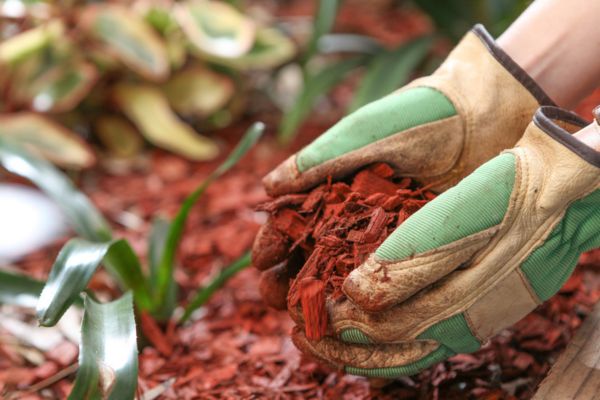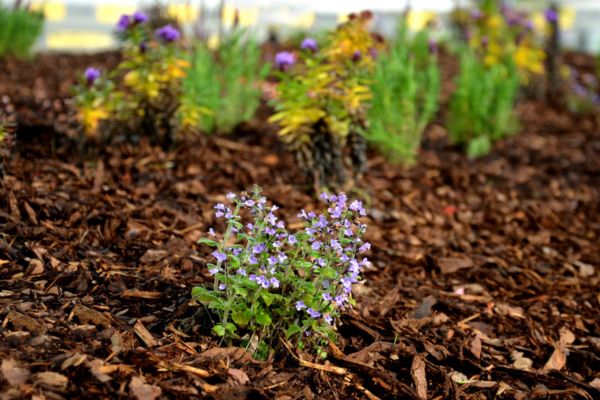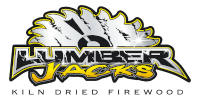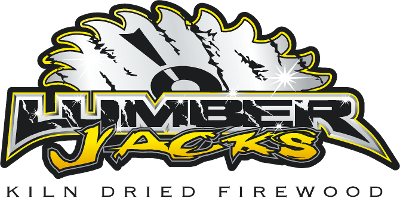Gardeners use mulch to cover the soil in a bed or other landscaping. It is a great tool for homeowners to protect their lawns and gardens. Mulch saves time on maintenance and weeding. Good-quality mulch can suppress weeds, conserve water, enhance soil quality, and prevent erosion. The cost of mulch per yard varies depending on several important factors.
Factors Affecting the Cost of Mulch
The cost of mulch per yard is dependent on several key factors, including:
- Geographic Area
- Organic vs. Inorganic Mulch
- Mulch Type
- Mulch Color
- Quantity of Mulch Purchased
If you understand these factors, you can better choose the best type of mulch for your project.
Cost of Mulch in Different Areas
The cost of various types of mulch will vary greatly depending on location. Regional differences in mulch availability can make some types of mulch cost-prohibitive in some areas. Also, some mulch is more available in certain seasons. So, in areas with seasonal weather, costs will vary more.
Mulch costs can vary greatly even within the same region of the country. In the Chicago area, wood mulch costs $78 to $95 per cubic yard, including delivery. In contrast, in Kenosha, Wisconsin, the price is much lower, at around $45 to $60 per cubic yard. This variation highlights the importance of considering location when determining the cost of mulch for your project.
Determining the Total Cost of a Mulch Project
Mulch is available for truck delivery by the cubic yard and in bags. For most projects, the best and most cost-effective way to buy mulch is by the cubic yard. To find the total cost of a mulch project, multiply the cost of mulch per yard by the project area. This will give you the overall cost of the mulch. The cost of mulch may include labor, installation, and delivery if you hire someone to do the job.
The cost of mulch per yard ranges from $30 to $90, based on the type of mulch. But some expensive types of mulch cost much more. To arrive at the final cost figure, the first step is to calculate how much you will need.
 Calculating How Much Mulch You Need
Calculating How Much Mulch You Need
First, measure the area to be covered. Then, calculate how much mulch you need. To measure area, use the following:
- Width of bed (or yard) x Length of Bed (or yard) = Area
- Example: 30 yards x 40 yards = 120 yards total area
In the above example, the garden is 30 yards wide by 40 yards long, or 120 yards in area.
Once you have the project area, you must decide how deep the mulch will be in inches. To calculate the number of yards you need, multiply the area by the desired depth. To convert this figure to cubic yards, divide this figure by 324.
- Area (in yards) x desired depth (in inches) / 324 = cubic yards
- Example: 120 yards (area) x 3 (depth) / 324 = 1.12 cubic yards
In the above example, to cover a 120-yard area to a depth of 3 inches, you will need 1.12 cubic yards of mulch. Once you know how much mulch you need, you must decide on the type to buy.
Cost of Mulch Per Yard for Organic Mulch
Some gardeners will use yard waste such as cut grass, which is free. Producing enough yard waste may be hard. Most gardeners will need to buy mulch.
Depending on the type, organic mulch costs from $30 to over $100 per yard. Pine bark, straw, and shredded hardwood are cheaper. Softwoods can be much more expensive. The following are major types of organic mulch and their typical costs:
Pine Bark $30
Straw $35-40
Tea Tree Mulch $45
Hemlock $50
Hay Mulch $60
Shredded Hardwood $40-70
Redwood $60-65
Cedar $75-100
Shredded Bark $95
Cypress $110
Pine Needles $150
Remember that this is the cost of mulch per yard, so the project’s total cost will typically be much more than the figure listed.
Cost of Mulch Per Yard for Inorganic Mulch
Some homeowners and gardeners prefer inorganic materials. These materials often last longer and cost less. The following are common types of inorganic mulch and their typical costs:
Synthetic Pine Straw $40-60
Crushed Seashells $40-400
Glass Mulch $50-70
Lava Rocks $50
Stone or Gravel Mulch $20-50
Rubber $80-120
Additionally, plastic mulching sheet costs $0.05 to $0.20 per linear foot, and landscape cloth costs $0.10 to $0.30 per square foot. Sheeting and landscape cloth will be at the high end of the cost range for inorganic mulch.
Cost of Mulch Per Yard Based on Color
Mulch is also available in several colors, making cost comparisons even harder. Some gardeners use colored mulch to create a striking contrast with a particular plant or bed. If the mulch is vibrantly colored, it likely contains dye and will cost more. If dye is a concern, make sure to check the ingredients of colored mulch. Red mulches can cost up to $40 per cubic yard, and green and blue mulches can cost up to $65.
Cost of Mulch Delivery
Delivery of mulch costs $50 to $200 if your load is under 15 cubic yards. The cost of mulch per cubic yard will typically decrease as the number of cubic yards rises. Mulch is also available in bags or loose form. It is possible to haul the mulch with a pickup truck, and the average pickup can hold around three cubic yards of mulch. Sometimes, vendors can charge a flat delivery fee not based on the order amount.
Cost of Mulch Installation
Mulch installation typically costs $20 to $55 per cubic yard. Labor-intensive mulches such as stone or gravel cost more. An accurate quote will include the costs of installation and labor. Of course, many gardeners and homeowners opt for a do-it-yourself project and install the mulch themselves. Anyone considering this should also weigh the costs of rakes and shovels needed for the project.
Cost to Replace Mulch
Any assessment of the cost of mulch should include a discussion of how often it will need to be replaced and the cost typically associated with replacement. Mulch removal can cost $50 to $75 per hour, with an additional disposal fee. To know the true costs over time, consumers should learn how often they need to replace different types of mulch.
Organic mulch typically lasts one season and needs to be replaced the following year. In contrast, inorganic mulch can last several seasons, saving on both initial costs and replacement costs later.
 Does Long-Lasting Mulch Save Costs and Money?
Does Long-Lasting Mulch Save Costs and Money?
Yes, long-lasting mulch will save you the cost of replacing each year. However, the question of whether to purchase long-lasting mulch is more complicated. The longest lasting organic mulch is cedar, which initially smells great, but loses its best qualities over time. This mulch takes forever to decompose, the upside of which is limited costs. The downside of mulch that lasts a long time is that it provides very little nutrition to the soil. The longest-lasting inorganic mulch is rubber (or stones), which can last forever but have the same problem—they provide no nutrition to the soil.
While frequent mulch replacement involves costs, remember that mulch that decomposes into the soil will provide nutrition and benefits to the soil, saving you money on fertilizer and water. So, when considering mulch, remember that a mulch that lasts forever may appear to save money but may begin to look old and may harm the soil. If you decide to pull this mulch, you may need to pay the cost to remove and replace it.
Other Factors That Influence the Cost of a Mulch Project
If your project is more complicated, it may involve clearing or leveling land. This can become costly, especially for large projects. The mulch area might need weeding. This can be done by hand (pulling up weeds) or by a paid lawn service. Homeowners might also consider mulching sheets to prevent future weed growth. While these sheets can be expensive, they can save money in labor costs over the long haul.
Cost of Spreading Mulch
If the area to be mulched is large, you may wish to consider mulch blowing. For this type of service, the mulch is blown over a large area at a cost of $40 to $60 per cubic yard instead of $70 per cubic yard to have the mulch spread by hand.
Total Cost of Your Mulching Project
The cost of your mulching project will depend on many things. Begin by determining how much mulch you will need and the type that best suits your project and budget. Then add in the cost of having the mulch delivered unless you are transporting it yourself. Then determine the cost of removal of the existing mulch, and the cost to install the new mulch. Before making a final decision, factor in the likely replacement cost of the mulch over the next few years.
Mulching benefits your lawn or garden. It reduces watering and weeding and saves time, money, and effort. The best times to install mulch are in the Spring and Fall, and it is widely available everywhere. Planning and executing your mulch project takes time and money, but it will pay off with a beautiful yard or garden.
Lumberjacks is the premier provider of hardwood mulch in Chicagoland and Southern Wisconsin. If you are looking for high-quality mulch, look no further than Lumberjacks. We offer delivery and pickup.








